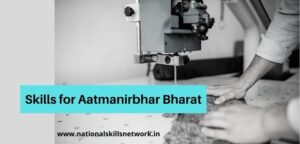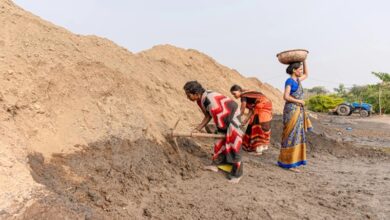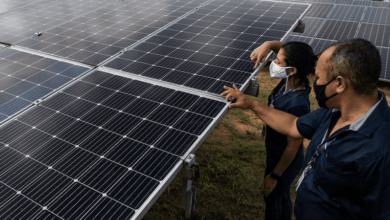Atmanirbhar Northeast via skill-based education

Ratnajyoti Dutta
Prime Minister Narendra Modi has put immense stress on the speedy development of the Northeastern states and gave a big push to the overall development process of the Northeast region through the ‘Act East Policy’.
The Northeast is a picturesquely endowed region of our country. The region, comprising seven sister states with one brother, Sikkim, has been endowed with abundant natural resources, not to mention rich flora and fauna. The region boasts rich wildlife and a colorful, diverse indigenous cultural heritage.
The region, despite its richness, lags behind the rest of India in terms of economic development as basic infrastructure facilities are yet to be developed to the desired level. For an economy to takeoff, facilities like roads, highways, power supply, and a skilled workforce are needed to help the overall development process.

The ‘Act East Policy’ of Prime Minister Narendra Modi’s led government gave a big push to the overall development process of the Northeast region. Immediately after assuming power for the first time in 2014, Prime Minister Modi said the country’s overall development and economic growth would be sustainable and equitable if the Eastern Region, including the Northeast, developed in a balanced way in sync with the national growth process.
The word ’employment’ is close to my heart. When I was in middle school during the early eighties, I came across the word ‘vocational training’ when the Assam state employment and craftsmen training department set up a Vocational Rehabilitation Centre (VRC) of the central government in Guwahati. As a school-going child, I got a first-hand idea about the correlation between vocational training and employment. That central government vocational training institute was meant for specially challenged people. The training institute used to work closely with the Industrial Training Institute (ITI), Guwahati. Later, as a graduate student of Economics, I realized the linkages of vocational training in raising the employability factor of a youth seeking employment in a job market.
India had already embarked upon the path of economic reforms by the time I finished my postgraduate studies in econometrics during the mid-nineties. The era of licences and permits gradually vanished, and the information technology (IT) revolution spread over the country. We entered the new millennium hoping to achieve a high economic growth rate. Overall, economic development initiatives gathered momentum. With the advent of the Modi-led government in 2014, a new narrative started in the country’s economic growth. The country’s growth should be balanced in nature, and for that to happen, the Northeast region’s growth process must be accelerated.
India needs to urgently promote the spread of vocational education to raise the employ-ability factor of its workforce. In South Korea, the Asian economic giant, as much as 96% of the workforce received formal vocational training. The rates stood at 75% and 52% in countries like Germany and the United States. In contrast, less than 5% of India’s workforce received formal vocational training, according to the 12th Five Year Plan (2012-17).
In 2022, we need to put the development process in place so that by 2040, the Northeast region will be on par with the rest of the country in terms of the economic growth process.
Prime Minister Modi has put immense stress on the speedy development of the Northeastern states. He has given the mantra of ‘Purvodaya’, consisting of a range of policy reforms that fundamentally change the drivers of development in the region.
For that to happen, the basic input of human capital needs to be groomed, keeping in mind the future requirements of machine learning, artificial intelligence, and the like in the overall growth process.
The employability of the labour force can be developed by focusing on vocational studies from an early stage of life. The National Education Policy 2020 highlights this important aspect of imparting vocational training at an early stage of education to avoid school dropouts. The NEP tries to synchronize secondary education with vocational studies so that
the nation’s youth, including those in the Northeast, become skilled to carry forward the mission of ‘Atmanirbhar Bharat’.
Orienting school education towards vocational studies and holistic personality development will induce youth to take up the challenge of start-up activities to create job opportunities in the later stages of life.
At least 50% of learners through the school and higher education system should have exposure to vocational education by 2025.
The concept of ‘Atmanirbhar Bharat’ aims to capture the benefits of innovation at grassroots levels and encourage young entrepreneurs and start-ups to forge closer ties with industry. In recent years, the Northeastern states have gained laurels in innovation in science and technology, biodiversity, organic farming, renewable energy, nanotechnology, petrochemical refining, the flora and food industry, the tea sector, and the like.
The addition of vocational courses to the degree curriculum will be an added advantage, said Dharmendra Pradhan, the country’s education and skill development minister. But it is more important to note that India now is not looking at degree-holders as ‘job-seekers’ but rather as ‘job-creators’, the minister said at the 27th convocation of North Eastern Hill University (NEHU) on May 21. Vocational training and rich knowledge of local customs and traditions can only enrich the student portfolios, Pradhan said.
The employability factor in the Eastern and Northeastern regions can be harnessed by realizing the potential of the young population. On the need to utilize this demographic potential to its fullest, Pradhan said the eight
Northeastern states have more than two crore children and youth aged 3–23 years. Of these two crores, about 1.25 crores of children are enrolled in schools, colleges, or other higher education institutions in these states.
“Even if we consider that some more children are studying in other states or outside of India, almost a third of children do not seem to be in the education system,” Pradhan said on May 20, inaugurating the Northeast Research Conclave at the Indian Institute of Technology (IIT), Guwahati.
The minister said that the gap started increasing from secondary education and added that bringing everyone into our education system, be it schools, colleges, or skill development institutes, was extremely important.
Under the NEP, the central government is in the process of setting up the National Research Foundation (NRF). The Foundation will ensure that the research ecosystem in India is strengthened.
The NRF will act as an umbrella structure for encouraging research and development and implementing some other educational reforms. The other major aim of proposing an NRF is to improve linkages between research and development, academia, and industry. A total proposed outlay for the foundation would be Rs 50,000 crores over five years. The Northeast region will gain from this initiative in promoting skills among its youth, resulting in enhanced employability.
NEP aims to overcome the social status hierarchy associated with vocational education and requires integrating vocational education into mainstream education in all educational institutions in a phased manner.
“Beginning with vocational exposure at early ages in middle and secondary school, quality vocational education will be integrated smoothly into higher education,” the NEP said.
The incorporation of vocational studies into the education chain will increase the level of employability of youths. Let this objective of spreading vocational studies in the NEP get absorbed by the Northeastern states on a priority basis to promote the theme of ‘Employment through Employability’.
Let the Northeast region starts implementing the National Education Policy, 2020 objectively to stay ahead of the curve in the overall national growth process.
[The writer is a Delhi-based senior journalist. He was an International Labour Organisation (ILO) nominated member in a working group that drafted the National Employment Policy, 2008.]
Credit : The article was first published at Organiser online on June 15, 2022.
Photo Source : Internet







